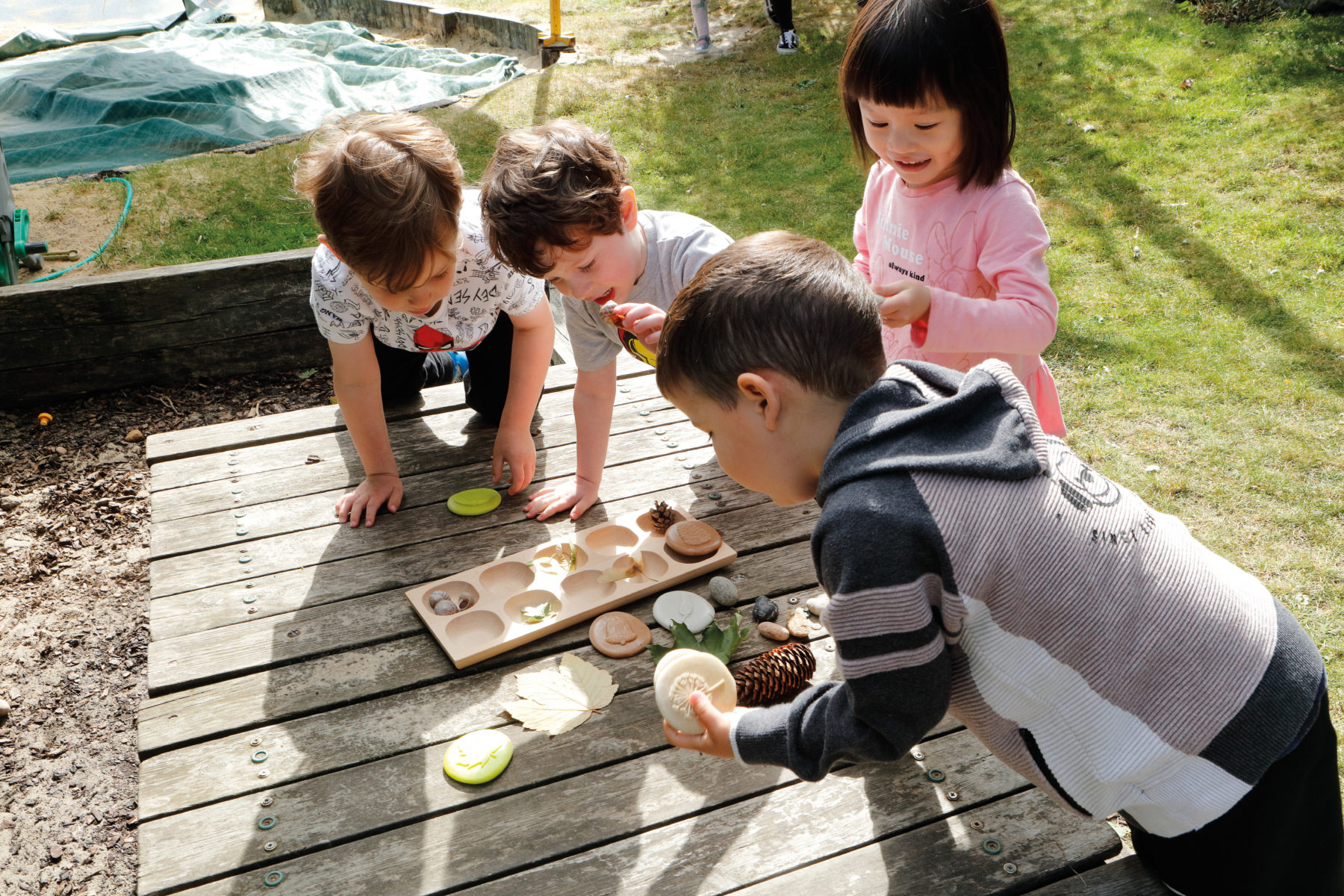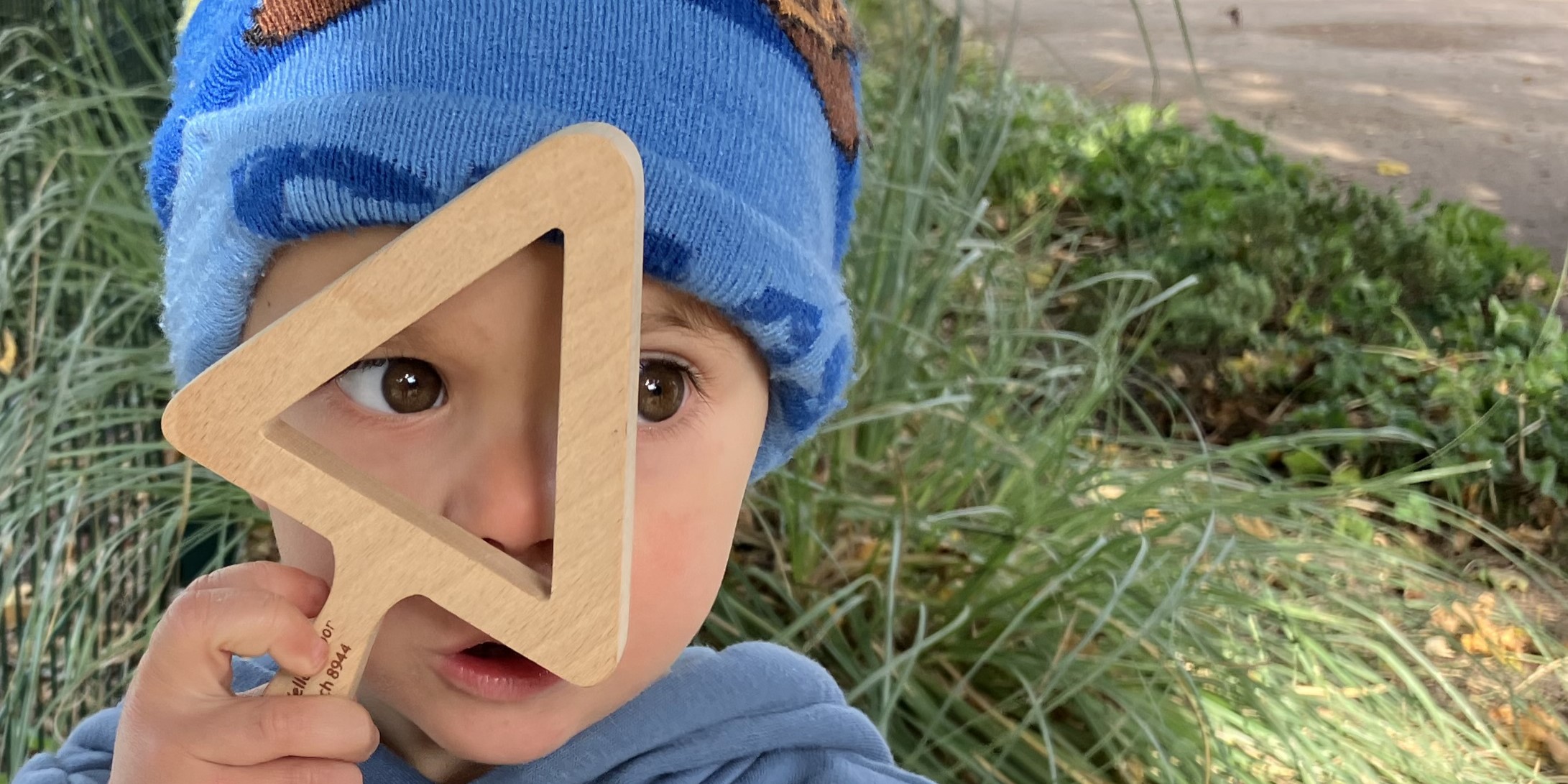As educators we need to prepare children for the world they will inherit. We do so not with dire warnings, but by encouraging in children a sense of joy in the natural world, helping them to care for and respect it.
With such delight comes a sense of the world’s precious nature and of our need to cherish it for others. Understanding this is the motivation for making small changes that will create more environmentally responsible settings.
Below are some simple ways that you can show your respect for the natural world and its importance to the wellbeing of all: adults, children, flora and fauna.

1. We are a community
Find ways for adults and children to learn about and appreciate your setting’s diversity in terms of the humans involved and the life of the natural world. If you work in a more urban setting, find ways to create habitats, visit local green spaces, look to the sky, listen to the natural world. Leave out books, binoculars, magnifiers and wooden frames to encourage children to really look. Explain to parents and carers – community members too – that the children are learning about the seen and often unseen organisms that they share their lives with. As David Attenborough said:
‘People are not going to care about animal conservation unless they think that animals are worthwhile.’
2. Time to treasure
Young children are eager to learn about their environment. This is something to be treasured and nurtured as they grow. The natural world is capable of surpassing anybody’s curiosity, calling us ever onwards, revealing more and more to fascinate and inspire. While we are responsible, and seriously so, for the environment, we should not forget to enjoy it and encourage children to do the same. Teaching children to take time and revel in the moment is a lifelong gift: squelch in mud, crawl through long grass, watch the clouds form and change. None of these requires expensive equipment – time and attention are all that are needed.

3. Keep it simple
There are many simple ways to make a setting more welcoming to members of the animal and plant kingdoms, but one of the most important steps is to start simple. Any change for the good, however small it might seem, will have a positive impact on the environment and the children’s attitudes towards it. It is quite possible to build wormeries, keep chickens, visit farms, create a mini-pond, all of which are fantastic ideas, but small projects also facilitate significant changes to outlook and the environment. Try some of the following ideas, perhaps, though, not all at once.
4. Please feel at home
Making wild animals welcome in the natural environment, which belongs as much to them as us, can be simple. There are many good websites that give clear guidance on how to make a range of bug homes and bird feeders using natural and/or recycled materials. Involving children in such learning-rich opportunities heightens their appreciation of wildlife, develops a wide range of practical skills, enables them to use real tools and take managed risks. The RSPB and Woodland Trust have some step-by-step guides to making different bug hotels and bird feeders. You might find the following helpful:
5 Top Tips To Attract Birds To Your Garden | Horticulture.co.uk
Build a minibeast hotel (rspb.org.uk)
How to Attract Wildlife to Your Garden – Woodland Trust
Upcycling for nature (rspb.org.uk)

5. Seeds of life
However small a setting’s outdoor space is, there is still room for growing plants. You do not need an allotment, nice as this would be, as almost any container can be used as a planter: old Wellington boots, saucepans, used tyres, buckets. It is enjoyable to create your own eco-friendly plant pots using newspaper. Such pots planted in grow bags or a border once the seedling has developed, will biodegrade within two weeks. Learn how to make these pots by watching the video below:
How to make newspaper pots / RHS Campaign for School Gardening
Make sure the newspaper you choose does not have inappropriate content.
Think about what fruit and vegetable plants you might want to grow. Many children will be more adventurous in their eating habits if they have grown the produce themselves. Strawberries, carrots, potatoes, raspberries and many others grow well. Try contacting a local garden centre or allotment society to ask their advice. They might well provide you with seeds or seedlings for free to get you started. Parents, grandparents and other family members might also have plants they could provide. Asking them is a great way to promote your setting’s sustainable approach and involve them in it. Work with the children as they care for the plants, harvest any produce and prepare it to be eaten.

6. Water for life
If you plan to grow your own produce, try to water your own too by harvesting rainwater. Do take advice on the safest way to do this. Should you choose to set up a water butt, think through where it will be placed, how you will make it stable, how the lock will be secured. Such measures will help ensure that collecting water is safe, so think these through for your setting. A dripping water butt tap, for example, can lead to the growth of slippery moss in the summer and ice in the winter. Managing such risks should ensure that water harvesting becomes a beneficial practice in your setting.
7. The outdoor classroom

Many settings make excellent use of their outdoor spaces to develop mud kitchens, vegetable plots, and so on. Such resources enable children to get soil underneath their fingernails and benefit from many sensory experiences.
The popularity of forest and beach schools indicates how valuable such environments can be to children’s appreciation of the natural world. However, not all settings have a wooded area or beach nearby. If this is the case for you, there are ways of making use of what is closer to home. At Yellow Door we offer a range of resources that can help your thinking:
Mud Kitchens and Beyond by Alison Norman and Janette Smith: a start-from-scratch handbook packed with activities
In All Weathers! by Sam Goddard: an experienced Forest School practitioner shares his skills, insights and favourite activities
See our Beach School Blog for 10 ideas for beach school activities even if far from the coast!
8. Natural alternatives
Where you can, try to use natural alternatives to ones that have been manufactured and come packaged in excessive amounts of card and plastic. Start small and simple and involve the children when you can. One example is making your own play dough. This is both therapeutic and reassuring as you know what ingredients have been used to create the dough. Our friend, Anna Ranson of The Imagination Tree has a no-cook, no-fuss play dough recipe, along with some great ideas for using natural substances, such as coffee beans, blueberries and turmeric powder, as dyes to colour the dough:
Best Ever No-Cook Play Dough Recipe! – The Imagination Tree
Natural Dyes for Play Dough – The Imagination Tree
9. The 3Rs
Not reading, writing and arithmetic! Instead try to implement the three principles of sustainability across your setting: reduce, reuse and recycle.
- Reduce: How can you use fewer resources in your setting by valuing the simple, taking a minimalist approach, prizing the resources you already have?
- Reuse: Do you have resources that can be repurposed, upcycled or kept for longer?
- Recycle: If you have resources that you can no longer reuse, can they be disposed of in an environmentally-aware way? Some commentators have added a fourth R: Re-think. Even the smallest change does make a difference, so do not be discouraged.
10. Environmental advocate
As you embrace a sustainable approach in your setting or as you think about starting, give someone the role of environmental advocate and encourager. They can be empowered to make suggestions across the setting, such as changing to a greener energy provider, using low energy lightbulbs and reducing materials that lead to the release of microplastics. A fully-supported advocate can make a significant difference to your setting, the humans that use it and the natural world that it should be a loving part of. 🌿❤️

